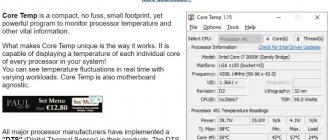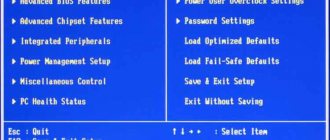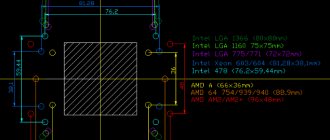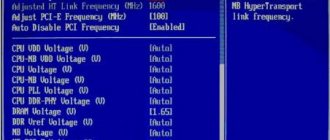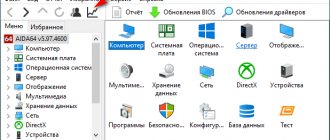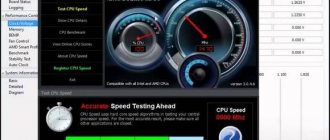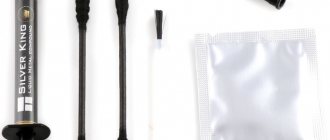Throttling (throttled or clock throttling) is a function of protecting the computer processor from thermal damage.
The throttling mechanism is found not only on computer or laptop processors. It is found in all modern digital devices, such as smartphones. When working at a computer, you can perform many different actions at the same time, for example, editing videos, watching videos, in addition, some other programs are running. Is it possible to remove CPU throttling? More on this below.
In this operating mode, the processor will quickly heat up. To lower the temperature, the cooling system is naturally used, but if it is not enough, a mechanism comes into play - throttling.
The essence of throttling is that it skips machine cycles when a certain temperature rises. The higher the temperature, the more clock cycles will be skipped, which in turn will forcefully reduce the processor's performance. In this case, the system may experience slowdown.
At what temperature does CPU throttling work?
Intel and AMD processors have different temperature indicators at which overheating protection would trigger. For example, if the temperature of Intel processors approaches 100-105 degrees, which is critical for the crystal, throttling is triggered. How to find out the temperature of the processor and other components can be found in this article.
The critical temperature of the processor is the maximum value of the operating temperature of the crystal. Since the processor has built-in thermal sensors, you can easily measure the temperature using programs or standard computer tools, for example, through the BIOS.
Throttling will work differently on different processor models. For example, Pentium 4 Northwood activates throttling at a temperature of 82-85 degrees. This can be verified very easily by performing a stress test.
For this matter, you can use the CPU Stability Test utility, at the same time turn off the cooling system (cooler) and watch how the temperature rises.
If the cooling system is damaged and does not work at all at a critical temperature, the processor may shut down completely. In other words, your computer will be forced to shut down.
It follows that the Thermal Throttling mechanism has two protection functions:
- Skipping clock cycles , which reduces processor performance and temperature equalization.
- Forced shutdown of the computer - when the temperature reaches a critical point.
Throttling: what is it?
The first protector of the processor from overheating was an emergency shutdown. The power was removed as soon as the temperature reached a critical level, and the computer, accordingly, turned off. It is worth saying that such a measure is still relevant, but in modern gadgets it is already considered as an extreme measure.
Throttling is the first to trigger overheating. What is this? Throttling is a mechanism that protects the processor from thermal damage when overheated. It skips a certain percentage of machine cycles depending on the temperature. This reduces the processor's performance so that it can cool down to an acceptable level. As soon as this happens, the system stops throttling and continues to operate normally.
It would be wrong to assume that this mechanism, by reducing performance, will be able to fully cool the processor instead of a failed fan. It is aimed only at eliminating overheating more gently and replaces an emergency shutdown of the computer in this case.
How to disable CPU throttling and is it necessary?
Throttling is an overheating protection system, which means that it cannot be turned off. If you do this, the processor will simply burn out and then you will have to spend money on buying a new one. This is good if some cheap CPU fails, but what if it is a top model from Intel or AMD?
Some BIOS Legacy and UEFI versions of different motherboards have options to disable throttling. This is usually done by changing the processor's critical temperature . If you are experimenting on a smartphone, then there are special applications for this that require Root rights or modification of the system kernel.
If you do this, be aware that overheating may negatively affect the performance of the device in the future, even causing the processor to fail.
Developers of motherboards, laptops and smartphones build tools into some models that allow you to adjust the level of performance. In other words, overclocking is done by increasing the frequency of the processor or other component. Thus, you increase the speed of the device, but the temperature also increases.
Also, on many modern smartphone processors there is a maximum frequency for short-term loads. This mode will prevent the cores from overheating. When the temperature level approaches critical, the core frequencies are reduced and the processor is cooled.
CPU Throttling Overheating Detected what is it?
Hi all. Let's talk guys about processors. This is my favorite topic, I say honestly and straight away. So what do we have today? And today we have a debriefing on such a phrase as CPU Throttling Overheating Detected, what does it mean? Well, let's think, are you with me?
So, the first thing to do is look at the phrase itself. So the word CPU is clear, it’s a processor, what is the word Throttling? And this, my dears, is throttling, which is a built-in protection against overheating, and if this throttling occurs, it means only one thing, the processor is very hot and so hot that it is already saving itself from this heat! Throttling is a mechanism for skipping clock cycles, that is, a forced reduction in performance to reduce temperatures. So, there is also the word Overheating, what is it? Well, this is translated as overheating. The last word is Detected, well, it’s just detected, that is, a type of detection. So let's summarize. The phrase CPU Throttling Overheating Detected means that processor throttling or overheating was detected. These are such sad pies.. =(
So guys, what's on your mind now? Panic? No, don't panic. It is unlikely that anything will happen to the processor, but of course something needs to be done. However, I am interested in another question. Where did you see this inscription CPU Throttling Overheating Detected? By chance not in the AIDA64 program? I just found this picture:
I know what kind of program this is, I ran tests on it myself. But I never looked at the place where this inscription in red is located. So, in any case, you need to check the real temperature. Run the test and try touching the processor heatsink. He may be hot. If you don’t have access to the radiator, then download some other program for measuring temperature, for example Speccy, by the way, here’s what it looks like (where there is an arrow there, look at the temperature of the processor):
Well, then check the temperature of the downloaded program exactly when AIDA64 shows the message CPU Throttling Overheating Detected. If the temperature is normal, then AIDA64 is simply some kind of glitch, because there can’t be any throttling at normal temperatures! Here at the top of the picture, well, where is AIDA64, the temperature seems to be normal, but it says CPU Throttling Overheating Detected, that is, it looks like a jamb on the part of AIDA64….
In general, throttling begins at high temperatures, somewhere around…. Well, maybe from 88, or maybe from 95, I don’t know for sure. But I know that it should be high. And this is dangerous, so there is no need to delay this.
Although I read that for Core 2 processors throttling began already at a temperature of 81-82 degrees.. But I think that below 80 degrees throttling is simply unrealistic and the main thing is that it’s stupid, 80 degrees is a high temperature, but not critical =)
But what should you do if, when there is an inscription that says throttling has started, then with this inscription you look at the temperature in one program, in another, and it is high everywhere? Well, this is not good... Maybe the computer is dirty, but it’s hard to imagine how clogged it must be with dust for the processor to experience throttling... If the computer is clogged with dust, then, of course, you need to clean it...
Yeah, I remembered! In short, the cause of throttling can be quietly you know what? Thermal paste is drying out! If you have a top-end processor and you often play games, the CPU gets hot, then the thermal paste can actually dry out over time and of course in this case there will be throttling...
Guys, that's all, I hope that you will find the reason for the throttling, otherwise, as I already wrote, this is not a joke. After all, the processor is like that, but when throttling it causes the motherboard to heat up... =( I sincerely wish you good luck...!
How to eliminate CPU throttling (overheating)
The point of fighting trotlin is to reduce the temperature of the system and then control it. In cases with smartphones, throttling will always occur, since the devices provide short-term maximum performance, but in such a way that the chip does not overheat for a long time under high loads.
On the subject: How to protect your processor from overheating using Core Temp
The only thing you can do is use your smartphone less:
- Play games not on ultra settings (the phone gets very hot).
- Do not keep in the sun.
- Give rest during severe overloads.
From my experience, I will say that by pure chance I left my smartphone in the sun in extreme heat. Not only was it impossible to touch it, since the lid is metal, but it was also almost discharged and turned off. Most likely, throttling occurred, which forced the smartphone to turn off.
It is possible to remove throttling on a computer or laptop if you follow just one nuance:
There must be a working cooling system inside the case (system unit). There are mounting points for the same fans. Buy several coolers and install them in every possible place. In addition, replace the processor thermal paste and clean the system unit from dust.
It is also possible to install liquid cooling, but this is only if you have a professional gaming computer, which is constantly subjected to extreme loads (games, editing, modeling, etc.).
Links
This is our story. The following materials greatly helped to understand what was happening:
- kernel.org → CFS Scheduler;
- kernel.org → CFS Bandwidth Control;
- Understanding Linux Container Scheduling;
- Everything You Need to Know about Linux Containers, Part I: Linux Control Groups and Process Isolation;
- Kubernetes Failure Stories - search for "cpu throttling".
Kubernetes bug reports:
- #51135: Avoid setting CPU limits for Guaranteed pods;
- #67577: CFS quotas can lead to unnecessary throttling;
- Overly aggressive CFS.
Have you encountered similar problems in your practice or have experience related to throttling in containerized production environments? Share your story in the comments!
What is CPU Throttling and how to disable it on a laptop
CPU Throttling is a function that causes a decrease in processor frequency, for example, when connecting a non-original power supply to a laptop. As a result, the device performance decreases. Let's find out in more detail how to disable this function on a laptop.
What is CPU Throttling
Some laptop manufacturers install a CPU Throttling function, which lowers the processor frequency and reduces performance if a non-original power supply is connected. If the power supply is not branded or has not been recognized, then the function puts the laptop into a reduced performance mode to protect the device from potential power problems in case of overheating (overload) during high power consumption.
But in practice, Throttling causes many problems for users who have replaced the power supply with a non-original one. The laptop starts to work much slower and not as efficient as before. This artificial reduction in performance is unacceptable for most users. But, there is a way to disable CPU Throttling.
Attention! You do everything at your own responsibility. The specified program affects the processor frequency, power saving function and other parameters that control the operation of the processor. Disabling automatic temperature reduction may affect device overheating and performance. Therefore, we provide information for informational purposes and are not responsible for any damage.
How to disable CPU Throttling using ThrottleStop
The simplest solution is to purchase an original power supply, but if this is not possible, you can work around the problem in another way.
Using the ThrottleStop program, you can disable the processor frequency reduction function in laptops. This is a fairly complex tool, and does not only work in cases of performance degradation due to power.
ThrottleStop allows you to disable other power saving features that reduce processor power.
Download the program from techpowerup com. ThrottleStop does not require installation; you just need to unpack it from the archive to any selected location on your disk. After extraction, run the exe file.
When starting, the program warns that you make all changes at your own responsibility.
When it boots, a main window will appear, which may not be clear to most users. ThrottleStop is not one of those programs where there is one switch to disable throttling. Different manufacturers have their own methods to reduce processor performance, so you'll have to experiment a little.
On the left side there are options to help you disable the feature. On the right, we find the parameters that are responsible for monitoring the current state of the processor. Let's look at the most important options that may be useful.
For Dell laptops
Owners of Dell laptops that have CPU Throttling should pay attention to the BD PROCHOT item. This item affects the frequency reduction function on laptops of this brand when we connect a non-original power supply.
Uncheck the box and don't change anything else, just click the "Turn On" (activate ThrottleStop) and "Save" (to save changes) button.
